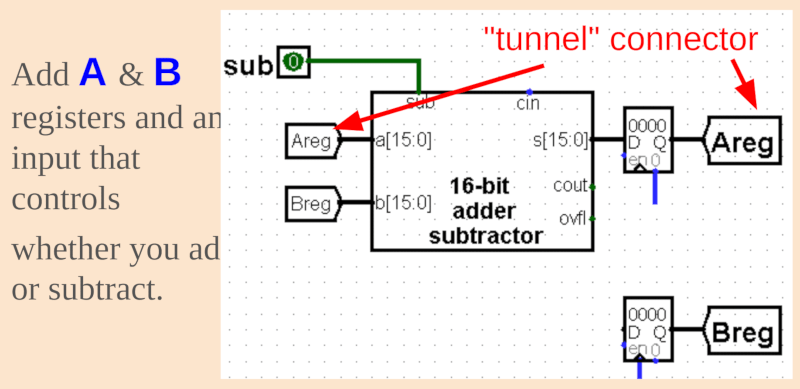We wish we had met [Mr. Mueller] when we were in high school. After 20 years as a digital design engineer, he decided to teach a digital electronics class at the high school level at LASA high school in Austin, Texas. He’s been doing it for seven years and has made his course material available via Google Docs.
Don’t let the high school level fool you. Topics range from simple electronics to Spice. There’s coverage of discrete devices, oscilloscopes, and Arduinos. There’s plenty of digital logic, of course, and a simple 16-bit microprocessor, too. There are labs for FPGAs using Verilog and talks about ARM. It’s pretty comprehensive and we wonder if they can really cram all this into a single school year. One thing we saw that caught our eye was the simulation of a transistor using Play-Doh. Turns out it isn’t an electrical simulation, but a simulation of how photolithography creates transistors. Still good stuff.
This would be great for teaching students of pretty much any age, even if you took only parts of it. It would also be worthwhile for self-study. We know how much work it takes to put something like this together, and we can’t commend [Mr. Mueller] and the LASA high school enough for making it available to everyone.
There is more and more course material out there at all levels and we think that’s a great thing. If you need something for a younger set, try a blindfold.















Kudos to LASA for an apparently excellent program. Public schools systems in California would probably not tolerate institutions such as LASA. California, as a society, does not believe in meritocracy.
Am a member of a team of cranky old engineers that have run an embedded systems program at a private school in San Diego County for over 15 years. The school has many other ‘advanced’ programs in the arts and sciences. The school has been under much pressure for the California Board to accept public funding and to open our programs to the general public. Probably because they want to prevent the advancement of excellence and meritocracy.
Or maybe they can see the merits of the programs and would like them to be opened up to kids who would not otherwise have the opportunity because their parents have a hard enough time putting food on a table and keeping a roof over their heads. But that can’t be it.
It couldn’t possibly be to help give kids more opportunities to succeed in the world.
This is so cool. I am far from high school but I think I can follow along and learn. Thank you for posting this!
He states that 99% of an atom is “empty space”. But this is like saying that the gas emanating from your little brother is “empty space”. In fact it is not empty. It is called an “electron-cloud” This is unimportant in life, but just thought you’d all like to know.
“One thing we saw that caught our eye was the simulation of a transistor using Play-Doh. Turns out it isn’t an electrical simulation, but a simulation of how photolithography creates transistors. Still good stuff.”
Heh. Nice to know I’m not the only one who found a use for it.
I thought he should use transparency slides for the SiO2 layers. One sheet below and above the poly and like 8 or 10 sheets for the passivation. Hole punch to show the connect points.